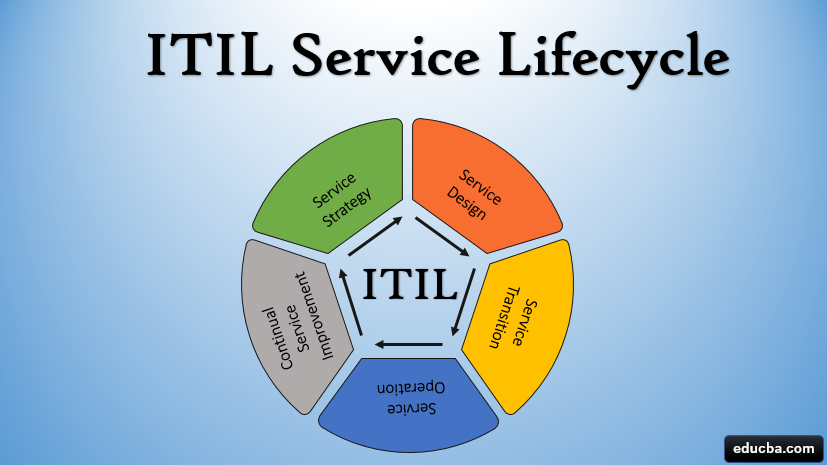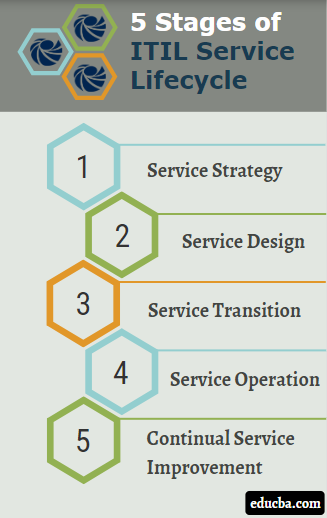
Overview of ITIL Service Lifecycle
In this constantly changing market place, the need for any organization is to be abreast with the evolving changes and adapt them quickly to provide high-end services to their customers, by continuously improvising their service strategy and design which will increase the value and usage of the services among them. This is exactly what ITIL Service Lifecycle offers.
ITIL Service Lifecycle is a framework consisting of processes for effectively managing the service lifecycle of any product or service offered by an organization.
Although it is an approach for IT Service Management (ITSM), it can be used by any organization irrespective of its size to manage the full lifecycle of not only the IT services but any service that it offers. Service lifecycle helps to improve the service management technique by using five processes to achieve better business performance.
Stages of ITIL Service Lifecycle
ITIL Service Lifecycle is divided into five stages/phases to support the business transformation and growth consisting of 26 processes guiding on best practices of implementing IT Service Management (ITSM).
- Service Strategy
- Service Design
- Service Transition
- Service Operation
- Continual Service Improvement
Each stage consists of a set of processes, key principles, roles, activities and performance measures related to that stage of ITSM. Also, all these five stages are dependent on each other for inputs and feedback which helps in keeping a regular check on the service lifecycle to ensure that as business demand changes with the customer’s need, the services can adapt and respond effectively to them.
Let us go through these stages one by one:
1. Service Strategy
This stage helps in devising a strategy based on the current market scenario and business perspective for the IT services being offered by the company, to provide a cost-effective solution for service management without compromising with the quality of the service being offered to the customers. It works by understanding the customers, the kind of IT services that must be offered, the cost involved, the resources needed, and the capabilities required to achieve them so that an efficient strategy could be laid out to serve the customers.
2. Service Design
After laying out the strategy for serving the customers, the second step is to work on the design which has been planned in the former stage. To achieve the targets set up for the business to flourish, the design must be executed. Hence, the scope of the process includes the designing of new services and working on the old existing ones to improve them by the newly devised service strategy. This process would require the business analysts and IT professionals to meet the customer needs in a cost-effective manner using the new modified architecture and technologies to design new services. Also, the IT Service Management system and tools to administer the old services and the modification needed in them to meet the expectations of the customer.
3. Service Transition
The process ensures that the new changes and modifications are efficiently incorporated in the service lifecycle without disrupting the other existing services or processes. It is carried out in a well-coordinated manner using cost-effective measures and resources. Through service transition, the design built is tested and implemented in the lifecycle in a productive manner calculating all the risks and planning ways to handle them to provide the desired value and quality of service to the customers. This phase hence manages the transition and processes related to it by addressing the changes implemented and their impact on the services to meet the expectation of the users.
4. Service Operation
After the completion of Service Transition, Service Operation phase delivers those services to the targeted customers. Hence, in this phase, the goal of delivering the services efficiently is achieved with reliability, while also keeping a check on the costs and the risks involved if any. It carries out activities and processes required to provide the optimal services to the customers and maintain user satisfaction by monitoring the daily activities of the system to address any service failure that might occur at the user end. It responds to user requests, guides them on the usage of the services so that it runs smoothly on their end and fix any problems that may arise while using the service.
5. Continual Service Improvement
The Continual Service Improvement follows quality check standards, in line with the concept of continual improvement adopted in ISO 20000. It aims at offering a mechanism for making the IT services efficient and valuable by constant feedback and improving their service levels and technology implemented to deliver the services. Also, a continuous assessment helps to not only remove existing roadblocks from the project but also make it much better and in consistence with customers requirement, as there is always a room for development in IT services and products.
Going through the above stages, the company can assess where it is lacking. Do they need to revamp their service strategy? Is it that the delivery of services is not in line with the customer’s requirement? Or is it the failure to meet the optimal levels of service it has to offer? Whatever may be the reason, it can be successfully dealt with if the company understands its requirements and implements the processes learned above as and when required. Identify the reason for failure, then locate at which stage it is occurring and then finally use the guidance of that stage to understand how to resolve and fix the service outage. This will help boom the business perspective and market value of the service and entrust the confidence of its customers for future usage.
Hence, ITIL with its five distinct lifecycle stages has brilliantly captured the guidance for processes needed to run and manage the service lifecycle for IT services and any other service as well for all kinds of organizations. It enhances the capability of companies to satisfy their customers efficiently and effectively with the best quality IT services and service lifecycle maintenance activities.
Recommended Articles
This has been a guide to ITIL Service Lifecycle. Here we discuss the five stages/phases of ITIL Service Lifecycle that support the business transformation and growth. You can also go through our other suggested articles to learn more-

